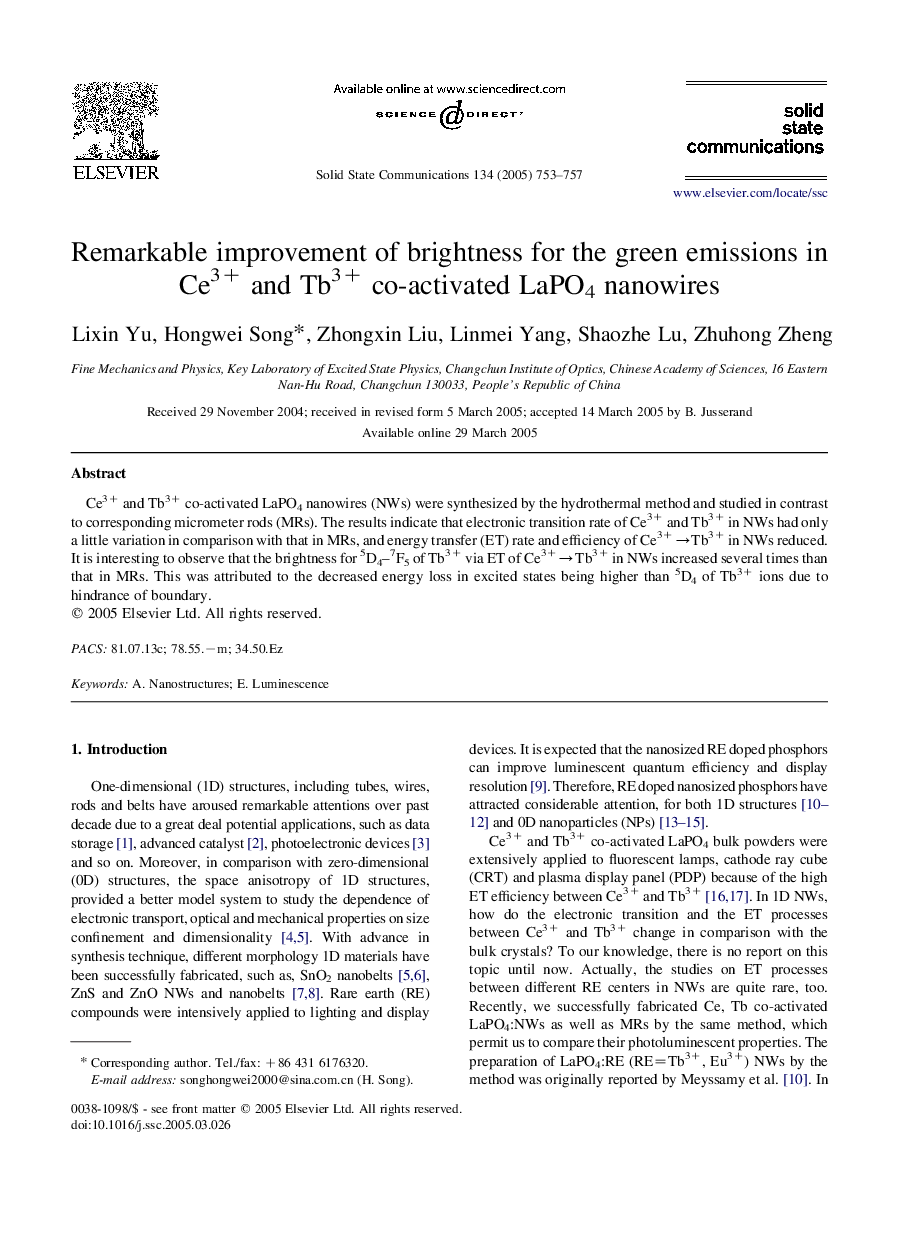| Article ID | Journal | Published Year | Pages | File Type |
|---|---|---|---|---|
| 10653532 | Solid State Communications | 2005 | 5 Pages |
Abstract
Ce3+ and Tb3+ co-activated LaPO4 nanowires (NWs) were synthesized by the hydrothermal method and studied in contrast to corresponding micrometer rods (MRs). The results indicate that electronic transition rate of Ce3+ and Tb3+ in NWs had only a little variation in comparison with that in MRs, and energy transfer (ET) rate and efficiency of Ce3+âTb3+ in NWs reduced. It is interesting to observe that the brightness for 5D4-7F5 of Tb3+ via ET of Ce3+âTb3+ in NWs increased several times than that in MRs. This was attributed to the decreased energy loss in excited states being higher than 5D4 of Tb3+ ions due to hindrance of boundary.
Related Topics
Physical Sciences and Engineering
Materials Science
Materials Science (General)
Authors
Lixin Yu, Hongwei Song, Zhongxin Liu, Linmei Yang, Shaozhe Lu, Zhuhong Zheng,
